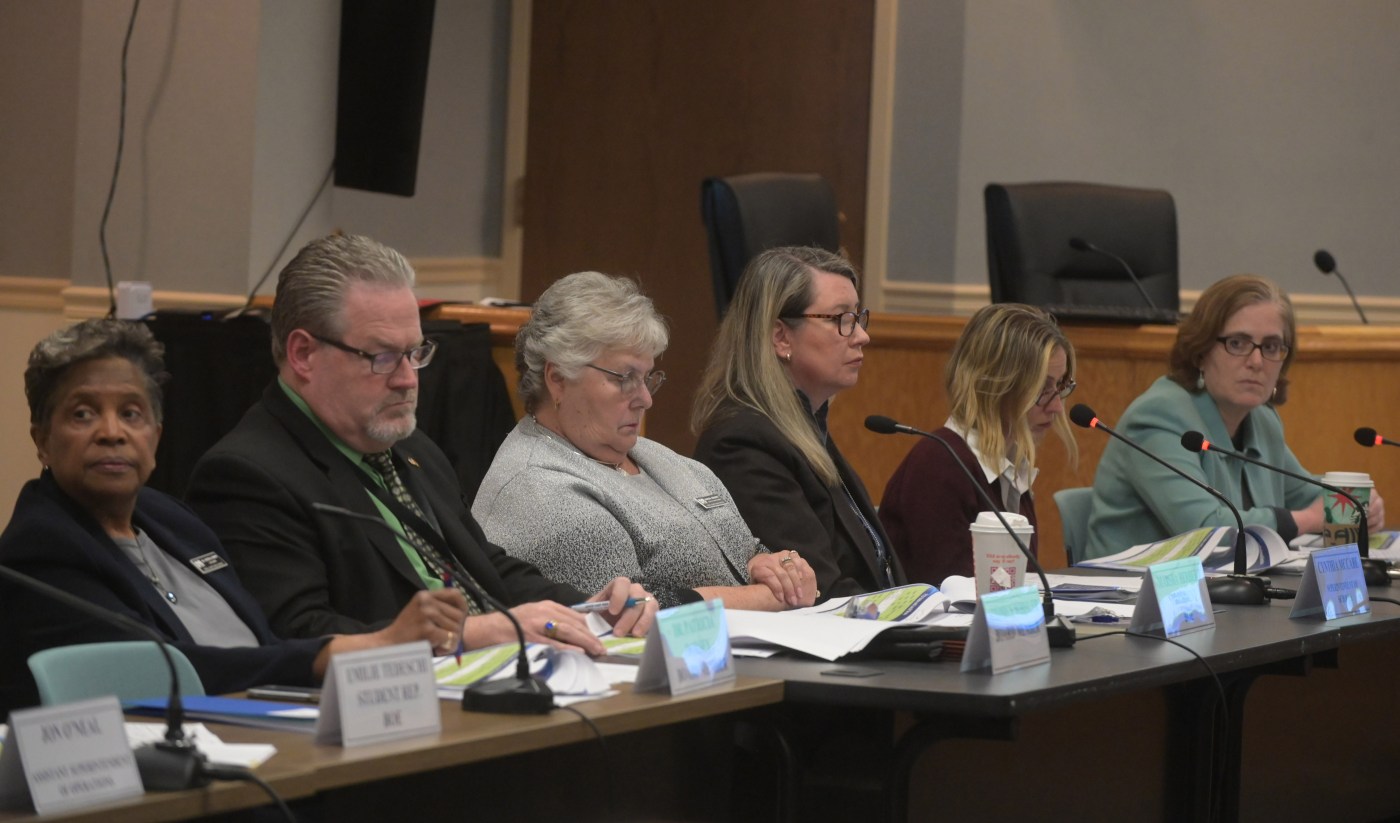The Board of Carroll County Commissioners met with school board members last week to discuss options for funding the $10.8 million increase the school system has requested in next year’s budget.
“I can’t continue to give the level of service that our parents and students are used to in the school system without the funding that I’m requesting now and over the next handful of years,” school Superintendent Cynthia McCabe told commissioners at a Wednesday meeting.
The school system’s requested $460.2 million fiscal 2025 budget asks for a $17.9 million increase in sustained funding from the county, $7.1 million of which is already funded.
The $19.2 million budgeted for boosting employee salaries is the largest increase in the requested budget. The fiscal 2025 budget also includes an increase of $6.9 million for inflation, $4.6 million for technology, $2 million for special education, $700,000 in state Blueprint requirements and $400,000 for transportation.
District 4 Commissioner Michael Guerin said the county does not have the money, “unless we’re willing to endorse tax increases on people. I’m hoping we can come up with some sort of solution for this year, because certainly I oppose them. I’m hoping the board feels the same way.”
Board of Education Vice President Tara Battaglia said she would be willing to pay more in property taxes to support county public schools, and other services the county offers.
“We want our children to be educated to be the best in the state,” Battaglia said, “and if every household has to chip in a couple of pennies a day to have that done, as an individual, I’m all for it.”
The county is facing a $12.4 million deficit in its recommended spending plan for next fiscal year, with revenues estimated at $524 million and expenditures at $536.4 million.
Most leaders of Carroll County agencies said they support increasing taxes to fund government services.
Commissioners’ President Ken Kiler, a former school board member, said he has heard from constituents who said they would support a tax increase to support high-quality, efficient government institutions in Carroll.
School board member Steve Whisler said he does not support raising taxes to fund the system’s budget request.
“We will live within the means that you give us,” Whisler said, “and if that means going back to refiguring our budget, that’s what we’ll do.”
School board member Patricia Dorsey said the budget request reflects the school system’s needs.
“We do need to support the budget that’s been presented,” Dorsey said.
School board member Donna Sivigny said the school system is a growth engine that contributes to revenue increases by enticing families to move to the county..
“As revenue continues to increase, I think that we deserve a good chunk of that revenue increase,” Sivigny said. “Talking about increasing tax rates, that’s a different story. If it’s to fund Blueprint, I guess I completely oppose increasing local tax rates in order to fund Blueprint.”
The Blueprint for Maryland’s Future is a state law that fundamentally aims to send more resources to students who need them — such as those living in high concentrations of poverty. Blueprint’s many ambitious initiatives include universal prekindergarten for low-income families, improving career readiness for high school graduates, and shifting resources to better serve students eligible for compensatory education.
Each year in Blueprint’s phased, 10-year rollout presents a budgetary challenge in implementing mandates, only some of which are fully funded by the state, Assistant Superintendent of Operations Jon O’Neal said. Maryland has indicated that a county’s local implementation of the Blueprint may be more flexible than previously thought, he added.
“We really do need to push the envelope on that flexibility,” Sivigny said.
District 5 Commissioner Ed Rothstein said he agrees that the system should push back on Blueprint in seeking more flexibility but does not question the school system’s ability to know how much funding is required each year.
“The big elephant is, how do you retain the services that we so deservingly expect and have had over the many years here in Carroll County, if you’re not able to have the amount of money needed to do that,” Rothstein said.







